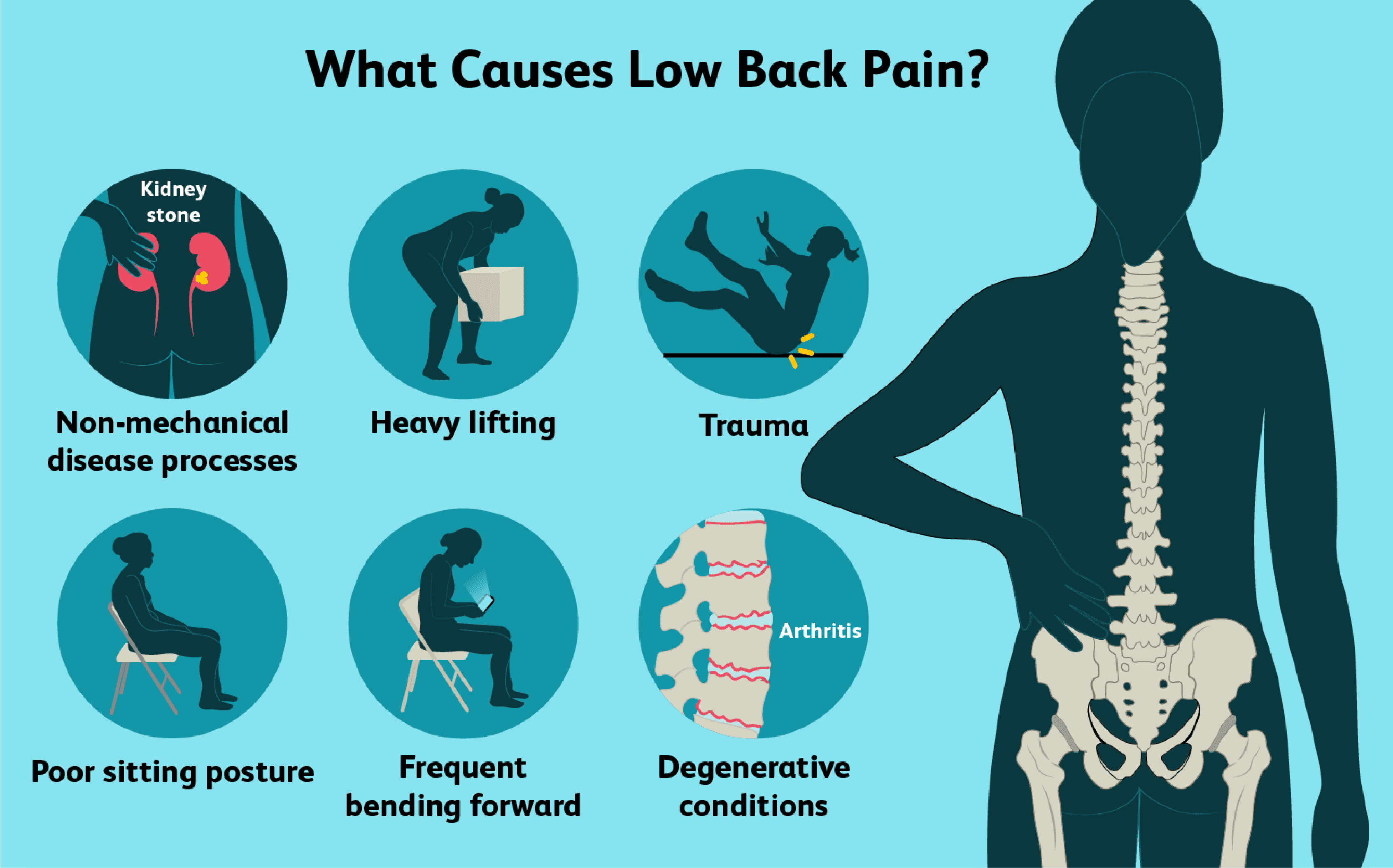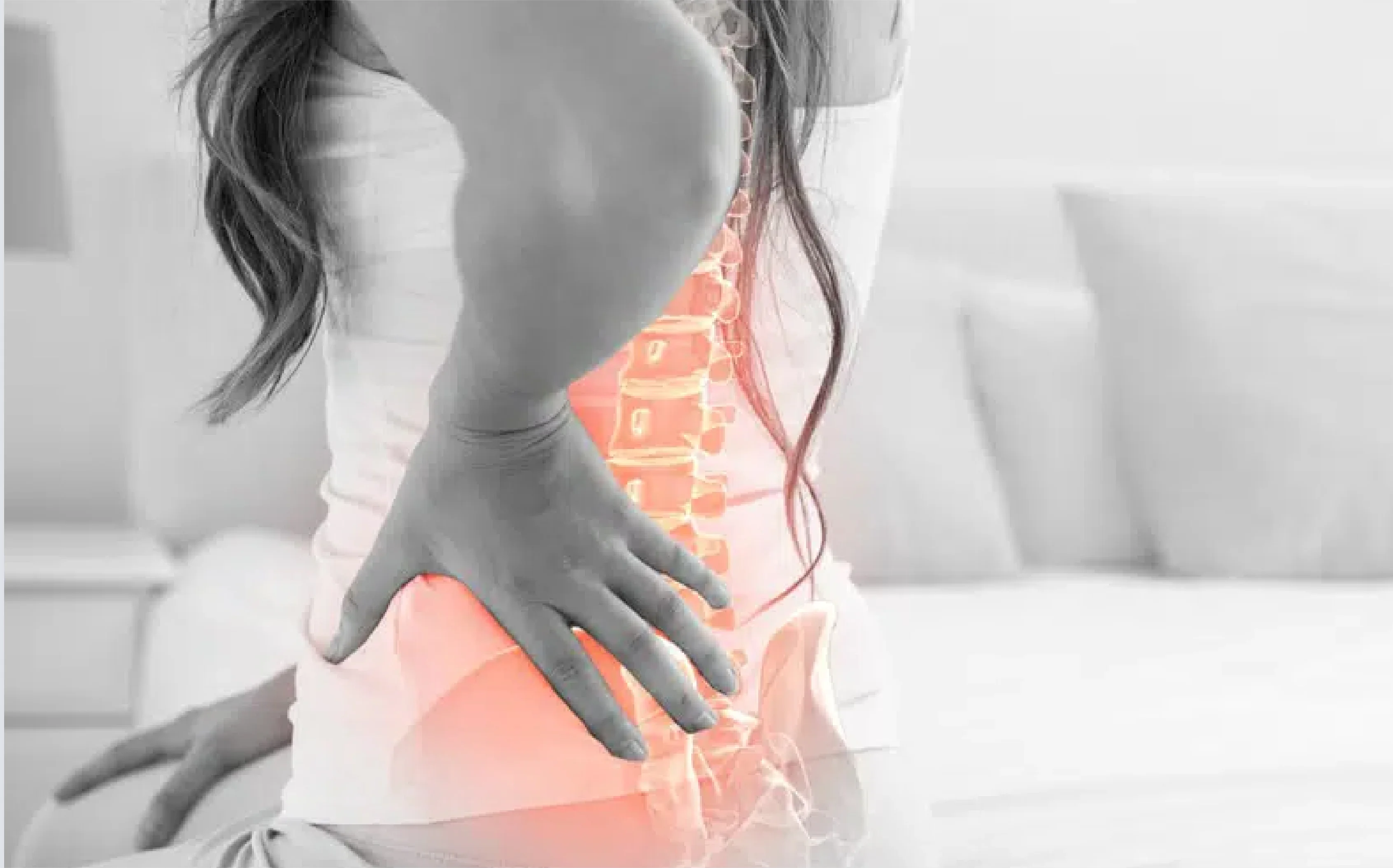Lower Back Pain in Women: Surprising Causes & Simple Solutions
People of all ages and genders can experience back discomfort. Lower back discomfort can be caused by a variety of factors, such as degenerative disc disease, arthritis, overuse, and injuries. Menstruating women or women of reproductive age group may also suffer from lower back discomfort associated with pregnancy, endometriosis, and their menstrual periods.
Sex-related anatomical variations may potentially be a factor in lower back discomfort. For example, women generally have a broader pelvis than men, which changes the lumbar spine's alignment and distribution of load.
This article covers the reasons for lower back pain in women. Additionally, it addresses the symptoms of different causes and the available simple solutions for back pain relief.

Read Also: Common Spine Problems: Effective Spine Injury Treatment Options
What are the Common Causes of Lower Back Pain in Women?
There are numerous possible causes of lower back pain in women. While some are associated with illnesses exclusive to women, others can affect everyone. There are certain reasons for lower back pain that are unique to women. These include the following conditions:
- Premenstrual syndrome (PMS): Many women suffer from PMS prior to their periods. PMS typically begins a few days prior to the onset of your menstruation and stops a day or two following the onset of your period. There are a lot of possible symptoms, and you probably won't experience them all. Women often experience lower back pain during this period.
- Premenstrual dysmorphic disorder (PMDD): The symptoms of PMDD, a more severe type of PMS, substantially disrupt day-to-day functioning. When experiencing symptoms, some women with PMDD may even find it difficult to do daily functions also. PMDD is less common than PMS in women. PMS and PMDD have many of the same physical, behavioural, and emotional symptoms. All symptoms, though, may be worse. Usually, symptoms begin the week before your period and go away a few days after it starts. If you have a family history of PMDD or depression and other mood disorders, you may be more susceptible to PMDD.
- Endometeriosis: When the endometrial tissue, which borders the uterus, develops outside of it, it results in a condition called endometriosis. When endometriosis occurs, this tissue frequently develops on the fallopian tubes, ovaries, and other pelvic lining tissues. It may even develop around the intestines and urinary tract. The most common endometriosis symptom is pain. Bleeding or spotting in between periods are other symptoms associated with endometriosis. One can experience digestive issues including bloating and diarrhea, especially during your periods. Endometriosis may make it difficult for the women to get pregnant.
- Dysmenorrhea: Dysmenorrhea is characterised by extremely painful menstruation. In some women, it can be really severe, although it's usually manageable. Dysmenorrhea typically causes pain in the legs, hips, lower back, and lower abdomen. Usually, it lasts between one to three days. The discomfort may seem like shooting pains or it may be dull and achy.
- Pregnancy: Pregnant women frequently experience back pain. It occurs as your weight increases, your centre of gravity changes, and your hormones relax your ligaments in preparation for delivery. Although it can begin much earlier, back discomfort often occurs in women between the fifth and seventh months of pregnancy. If you already have lower back problems, you are more likely to experience back pain during pregnancy. The most common spots for pain are across your tailbone and just below your waist. Additionally, you can experience soreness around your waist and in the middle of your back. It's possible for this soreness to spread to your legs.
- Other common causes of back pain that are common to all genders are:
- Muscle strain
- Sciatica
- Herniated disc
- Disc degeneration
Read Also: Chronic Pain: What It Is, Symptoms, Treatment In Hyderabad
Simple Solutions for Lower Back Pain in Women
If your lower back pain is brought on by a strained muscle or issues associated with your menstrual cycle, you must try these natural remedies:
- Use heating pad: Applying a heating pad to your back can increase circulation, which enables oxygen and nutrients to reach your back muscles.
- Take a warm bath: A warm bath helps ease stiffness and discomfort in the muscles and increase circulation.
- Take OTC painkillers: Back pain and other period-related pain can be reduced with over-the-counter (OTC) nonsteroidal anti-inflammatory medicines (NSAIDs), such as aspirin, naproxen, and ibuprofen.
- Engage in regular exercise: Maintaining an active lifestyle can help release tense muscles and increase circulation.
- Do gentle stretching: Doing gentle stretching on a regular basis may help lessen or even eliminate lower back pain.
- Keep an ice pack on your back: An ice pack may help lessen discomfort, inflammation, and bruising if your back pain is brought on by an injury or strained muscle. After a muscle strain or injury, ice packs are most effective during the first 48 hours.
- Use an ergonomic cushion for your back: Back pain and stiffness may be reduced by positioning a pillow beneath your knees if you sleep on your back, or between your knees if you sleep on your side.
- Give good support for the lumbar region: Sitting on a chair having adequate lumbar support may help to reduce your back pain.
Conclusion
There are numerous underlying reasons and illnesses that can cause lower back pain in women. Your back discomfort can be related to menstrual cycle-related problems if it occurs around the time of your period. Muscle strains, sciatica, or a herniated disc are among the disorders that might cause your discomfort and may affect people of any age or gender.
The underlying cause of lower back pain determines the course of treatment. Often, you can start with home remedies. However, you should see your doctor immediately for a diagnosis and therapy if your back pain doesn't go away or worsens.
These were common causes of lower back pain in women and simple solutions to stay pain-free! Get personalized guidance for managing your back pain from our neurologists at Walk Again. Book your appointment now!
FAQs
Q1: Can hormonal changes cause lower back pain?
A: Yes, hormonal fluctuations during menstruation, pregnancy, and menopause can lead to inflammation and muscle sensitivity, resulting in lower back pain.
Q2: Does wearing high heels cause lower back pain?
A: Yes, high heels alter spinal alignment and put extra stress on the lower back, which can lead to pain over time.
Q3: Can stress and anxiety cause lower back pain?
A: Yes, stress can cause muscle tension, especially in the lower back, leading to stiffness and discomfort.

